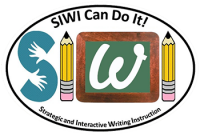Writing knowledge, practices, efficacy, interests, and beliefs of deaf education teachers: A randomized controlled trial
Writing teachers play an extraordinarily important role in their students’ writing development. Teachers’ motivational beliefs, such as attitudes toward writing,
perceptions of their efficacy to teach writing, or preparation to use evidence based instructional practices, impact their writing instruction, which directly affects
the advancement of students’ writing skills. Deaf writers are a subpopulation of writers who may face discriminatory beliefs toward their writing development
stemming from ableism, audism, or linguicism. Deaf education teachers may doubt their abilities to teach bilingual/multilingual students or teach deaf students
experiencing language deprivation. The current study investigates whether deaf education teachers’ beliefs can be fostered through an intensive one-year
professional development (PD) program designed specifically for deaf education teachers. In this randomized controlled trial, we examine the extent to which the
participation of deaf education teachers in specialized PD and subsequent writing instruction implementation (n = 26) impacts their pedagogical content knowledge, use of evidence-based practices for teaching writing, interest, attitudes, efficacy in teaching writing, and epistemological beliefs about writing compared to teachers in a business as usual condition (n = 24). Pre-post regression analyses indicate statistically significant group differences (with the treatment group scoring higher) on all variables except attitude and some epistemological beliefs. We speculate that specialized, sustained PD paired with supported implementation of writing instruction and ongoing teacher reflection are contributing factors to changes in teachers’ motivational beliefs.
